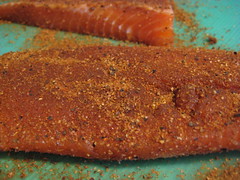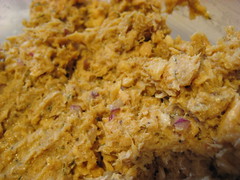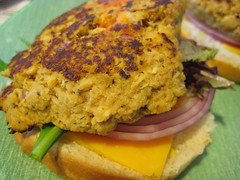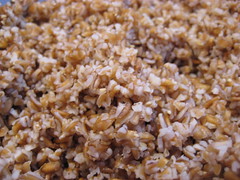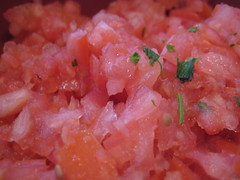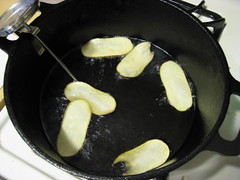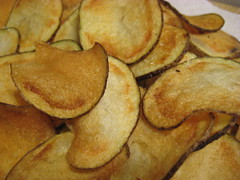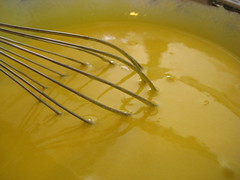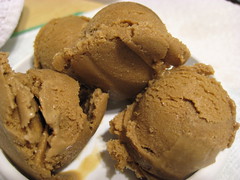Its no secret that I like seafood, so every time I go to the supermarket I swing by the fresh fish case and see what's on sale and if there's anything good on managers special. This past week I found two whole fillets of steelhead trout (the ocean caught form of rainbow trout) for $5 on special, so I picked them up with some nice ciabatta rolls and went home planning out a fish sandwich in my head. I didn't want to fry it, but I did want the fish to be a little crispy without being dried out. Some spice would be a nice touch too since trout is a little bland for a red fleshed fish (in my opinion at least). I settled on making the classic blackened fish and serving it with a nice and spicy mayo on the ciabatta rolls.
Blackening spice can be many things, but generally is based off a combination of paprika (which burns easily) and other spices that will form a dark(burnt) crust on the outside of a piece of meat (generally fish but also chicken, occasionally beef). As with anything, you can buy it pre-made, but you're really better off making it yourself from what you have in your spice rack. A decent base "recipe" is below, but feel free to experiment. Depending on what meat you have on hand, you may want to add more or less of certain spices to augment or accent what you have.
Blackened fish sandwiches:
2 tbsp. paprika
1 tsp. black pepper
1/2 tsp. onion powder
1/2 tsp. garlic powder
1/2 tsp. cayenne pepper
2 fish fillets (abt. 3 inches wide)
2 rolls of your choice
cheese slices, cheddar is a good choice
assorted greens, onion, pickles, cheese for dressing
1/4 cup mayo (store bought or home made)
2 tsp. chipotle tabasco (feel free to use less)
1 tbsp. dill weed
2 tbsp. butter
- Combine the paprika, black and red peppers, and onion and garlic powders in a jar or small dish and mix thoroughly.
- Pat the fish or other meat dry and rub liberally with the spice mix to coat. Put a skillet (preferably cast iron) over high heat and add the butter.
- Just as the butter begins to burn, add the filets and cook on each side for roughly 1-2 minutes per side (fish is quick, chicken will take longer, don't give yourself food poisoning...). Remove from the pan and set on some paper towels to remove some of the excess fat.
- Mix the mayo with the chipotle tabasco and dill weed and spread some on each side of the roll/bun. Add the cheese, some greens and onion (I added some pickles to cool it down more since I used more cayenne) and lay the fish on top.
- Enjoy with some chips and a nice cold beer.
Now, for some people, thats a rather light blackened fish, and I'll admit that that's a somewhat true assessment. Traditionally you would want your pan raging hot over full heat and use pre-melted butter as lubricant. Not wanting to risk full fledged firey chaos, I toned the temperature down some. You don't get the sides as dark, as you can tell, but you avoid having to meet your local fire crew on less than ideal terms (although I'm sure they're great).
One issue some people may have to this recipe is the natural aversion to eating burnt things. Over cooked burgers, failed Thanksgiving turkeys, pies forgotten in the oven, the record of "burnt" food is pretty poor. The beauty of blackened foods, though, is that the spices were purposely chosen for their low burning temperatures. Combined with the milk solids present in the butter (which is why butter is used to do this), you end up getting a burnt crust that actually protects the meat from drying out and burning itself. The result is a juicy, fully cooked inside, with a crispy spicy outside.
Ok, so there's a recipe. I've got some less outlandish ones in the pipeline now that I pretty much know will work, and my beer should hopefully be done in another week or so, so look out for that one.
Cheers,
Mike

